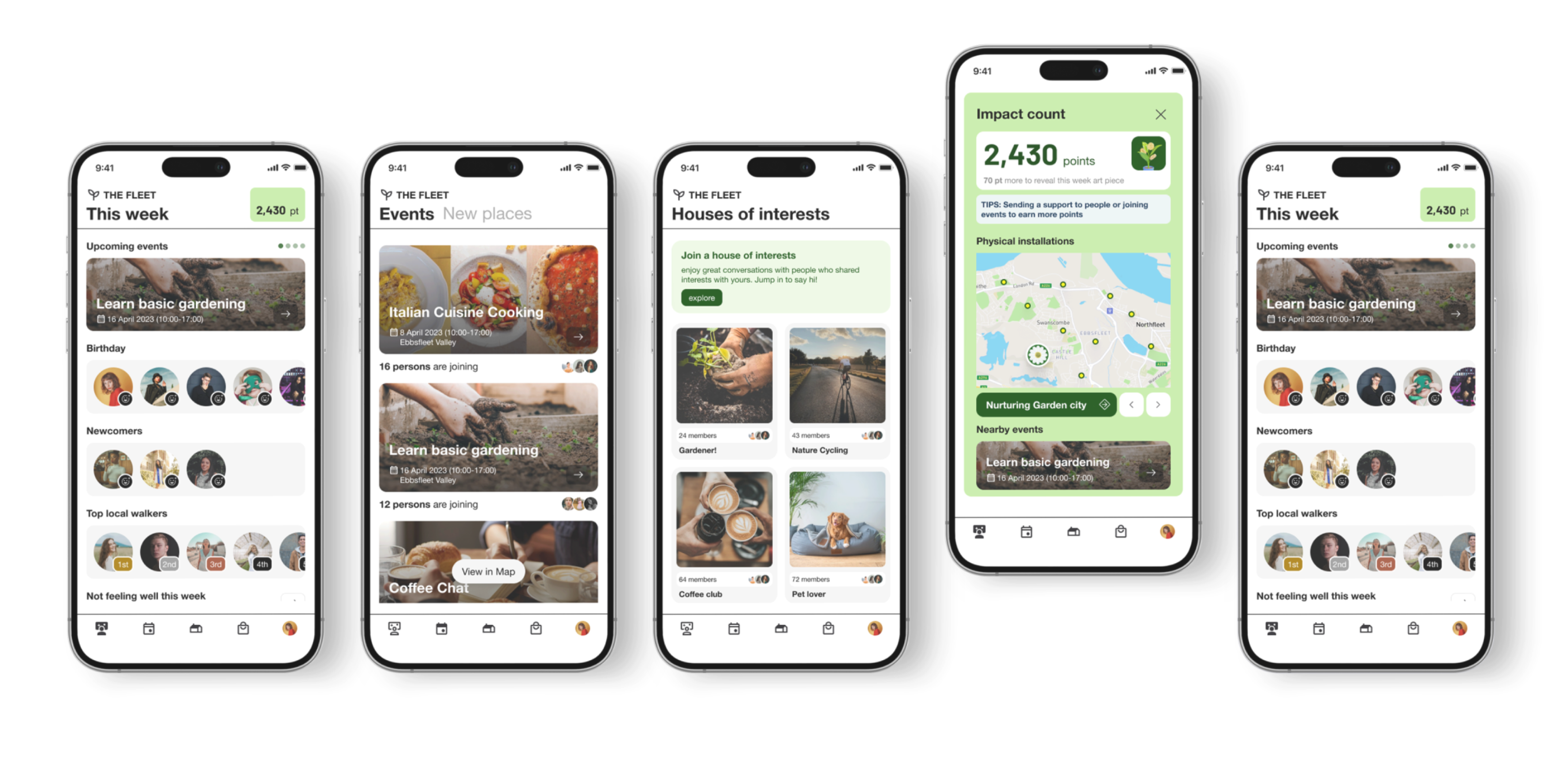
The Fleet
Cultivating Community Connectivity and Identity with Design

-- Role --
UX Researcher, UX Designer
-- team --
Charn Sangvirojkul, Tianyu Shi,
Yifan Zhang
Yifan Zhang
-- Timeline --
Mar, 2023
4 Weeks
4 Weeks
-- Background --
This project origins from the IDE Impact module. We conducted field research in Ebbsfleet Valley community. Our given topic for this module was to develop a strong shared identity among new and existing residents.
-- Skills --
Figma
User Centered Design, UX Research
User Centered Design, UX Research
-- Problem Definition --
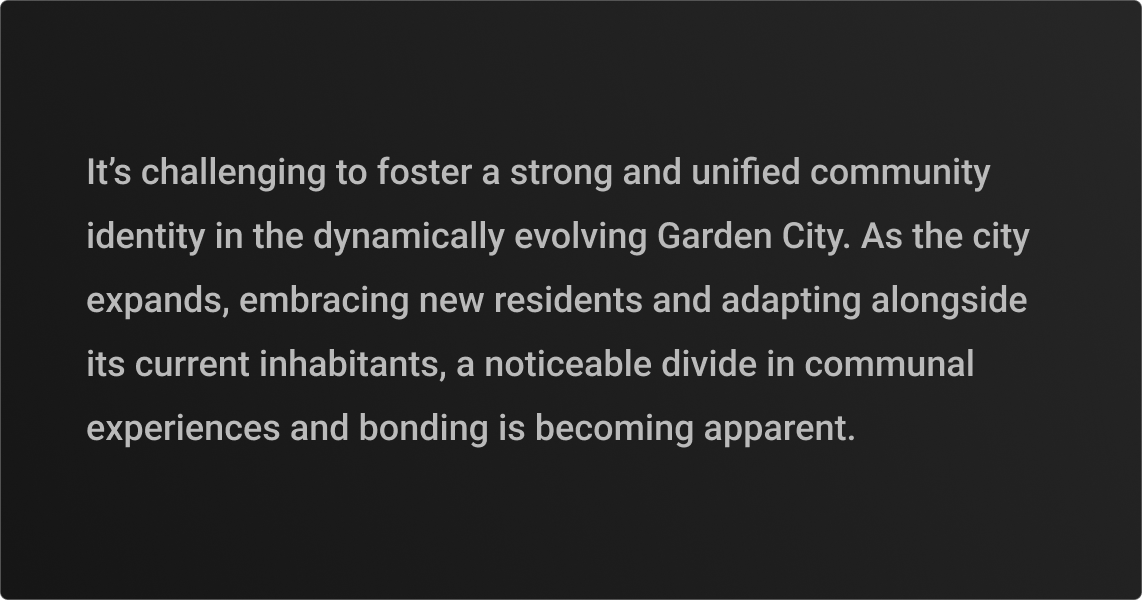
-- Given HMW --
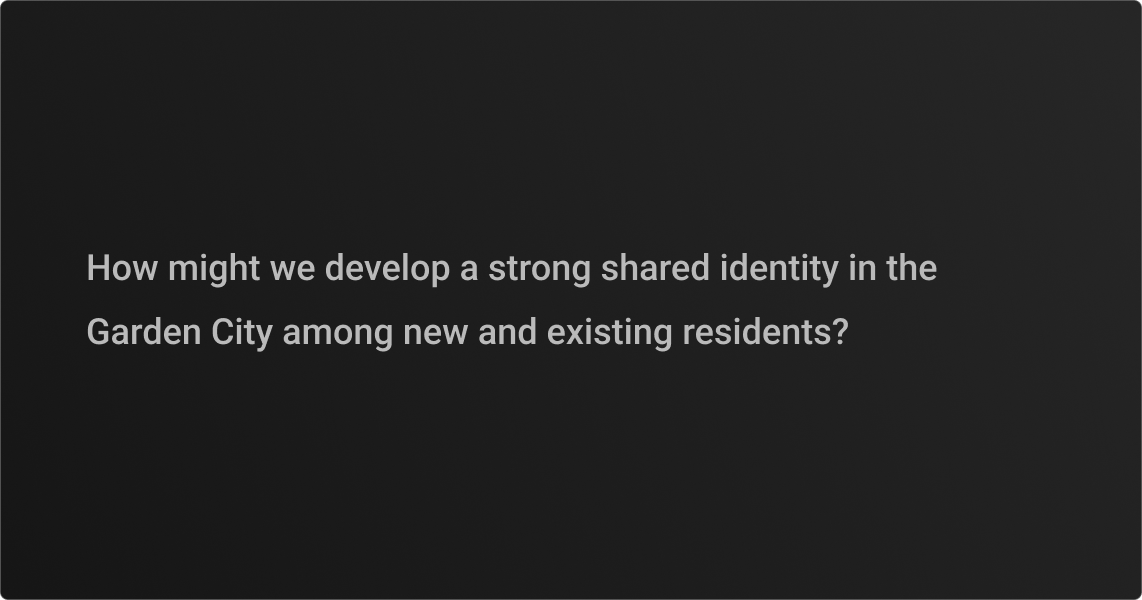
-- What is shared identity? --
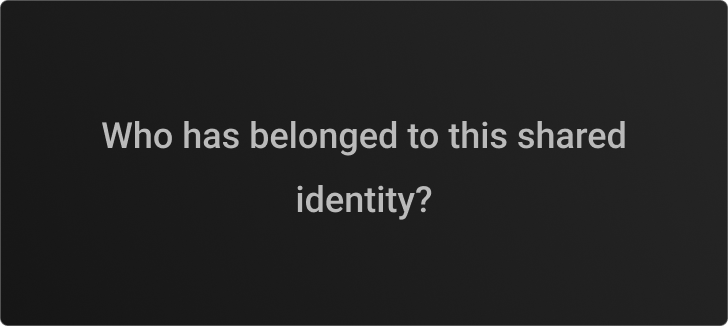
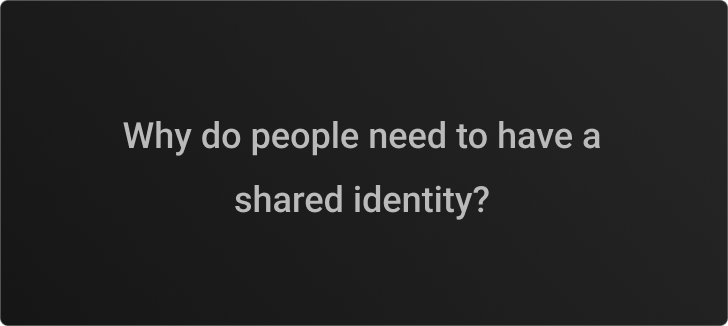
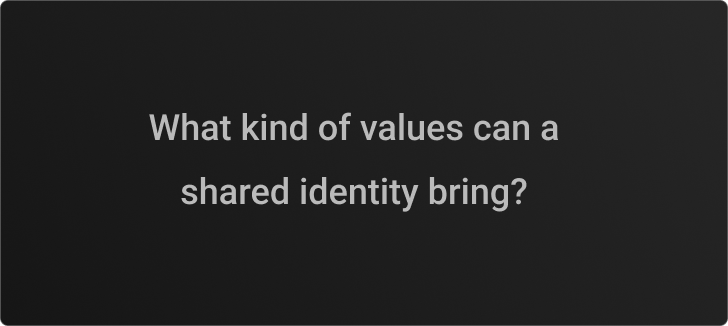
-- Desk Research --

• Rapid population growth
• Average age: 31; much younger than the national average of 39; younger than neighbouring areas
• Young families with young kids
• More diversity (ethnic & religious & Income)
• Higher average income than the national average
• The main resource of employment: Retail, Manufacturing & Property.
• Average age: 31; much younger than the national average of 39; younger than neighbouring areas
• Young families with young kids
• More diversity (ethnic & religious & Income)
• Higher average income than the national average
• The main resource of employment: Retail, Manufacturing & Property.
-- Interview --
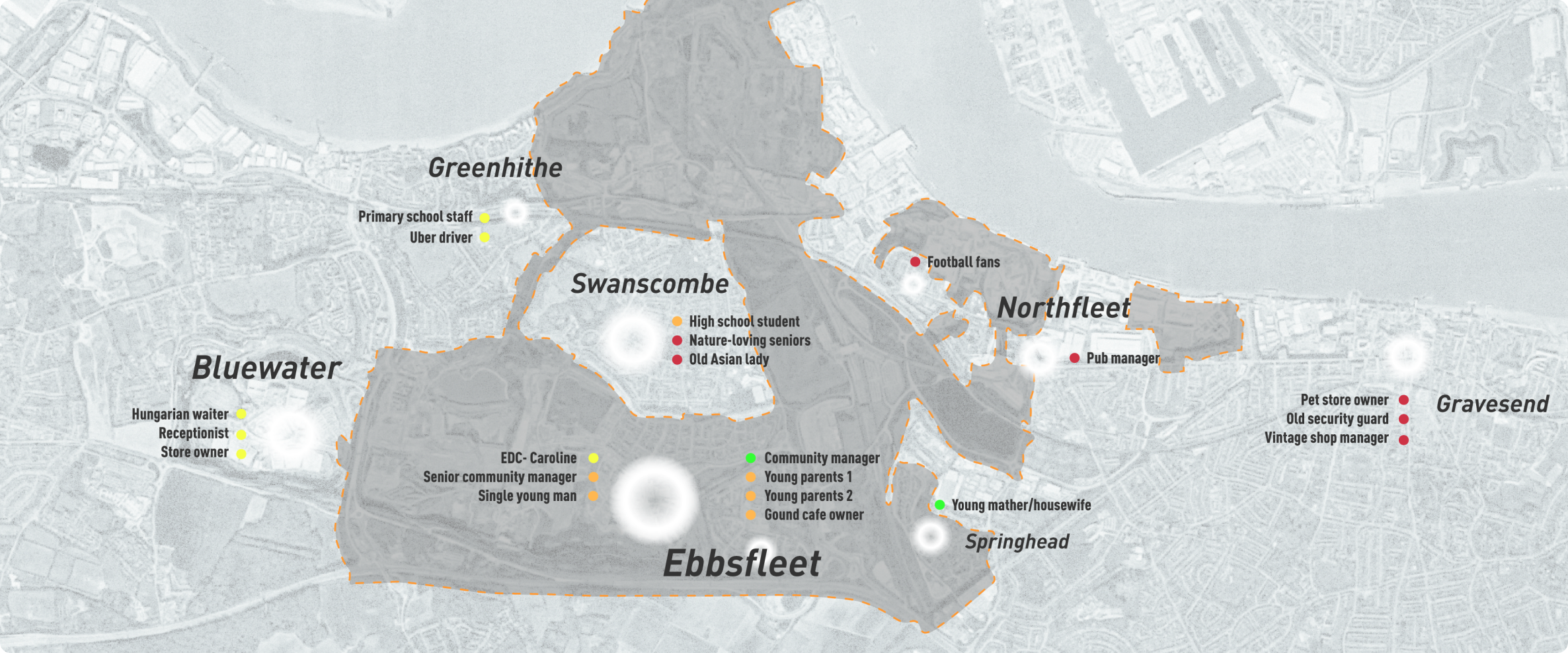
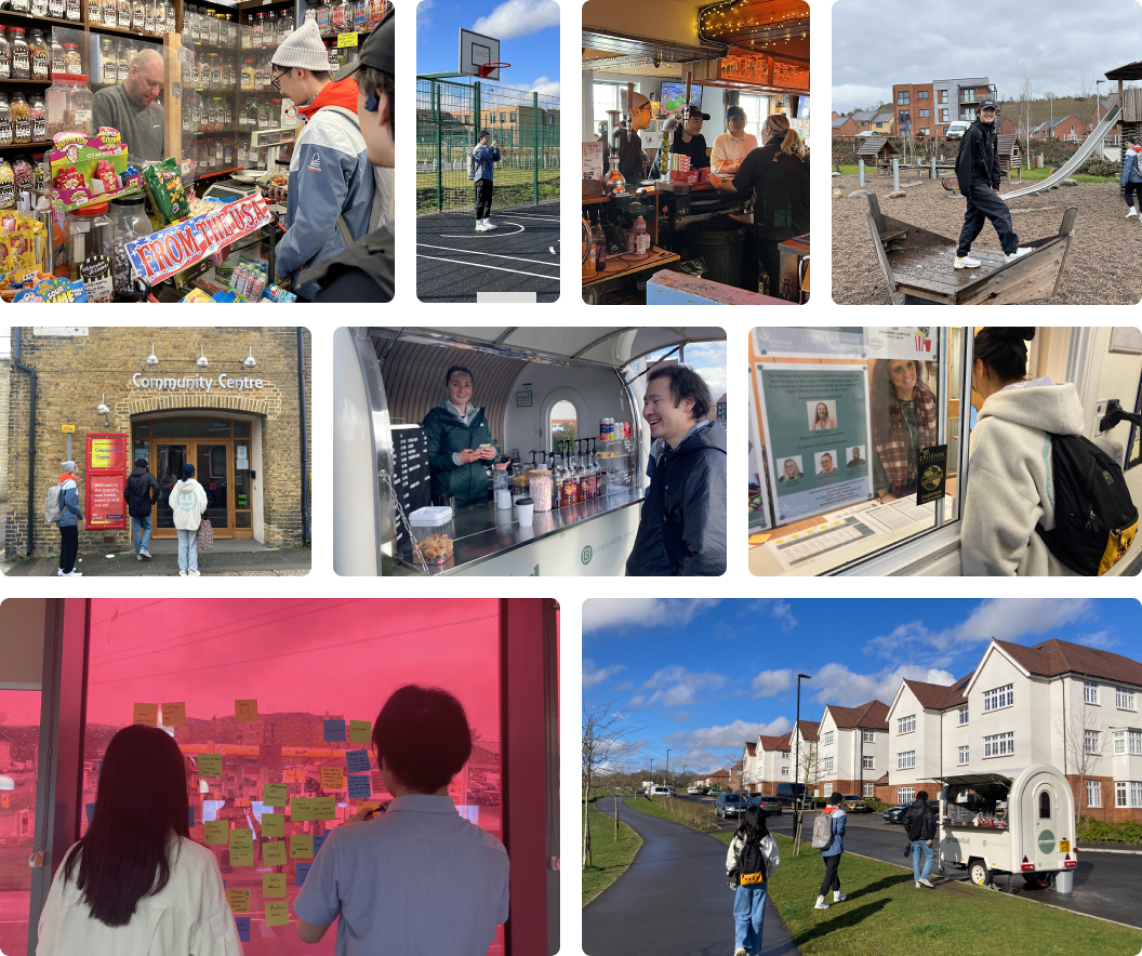


-- Insight #1 --
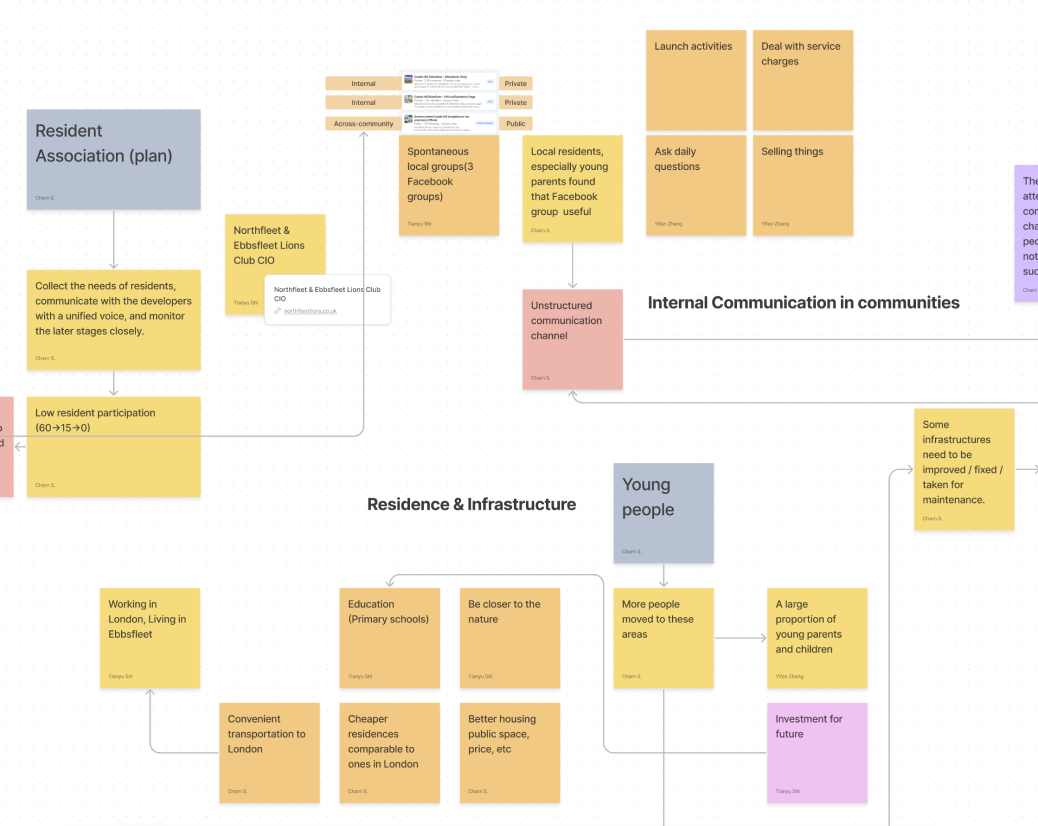
How might we create more efficient communication channels within Ebbsfleet and
between different communities?
People moved here not for sustainability or healthy living, but mostly for economic purposes. They found residences here to be cheaper and enjoyed new infrastructure, which was considered as a big investment for them, especially for young parents. Therefore, good infrastructures are demanded. Internal communication channels were essential for spreading news and maintaining the quality of residential areas. They also helped to unify the voice for communicating with developers.
People moved here not for sustainability or healthy living, but mostly for economic purposes. They found residences here to be cheaper and enjoyed new infrastructure, which was considered as a big investment for them, especially for young parents. Therefore, good infrastructures are demanded. Internal communication channels were essential for spreading news and maintaining the quality of residential areas. They also helped to unify the voice for communicating with developers.
-- Insight #2 --
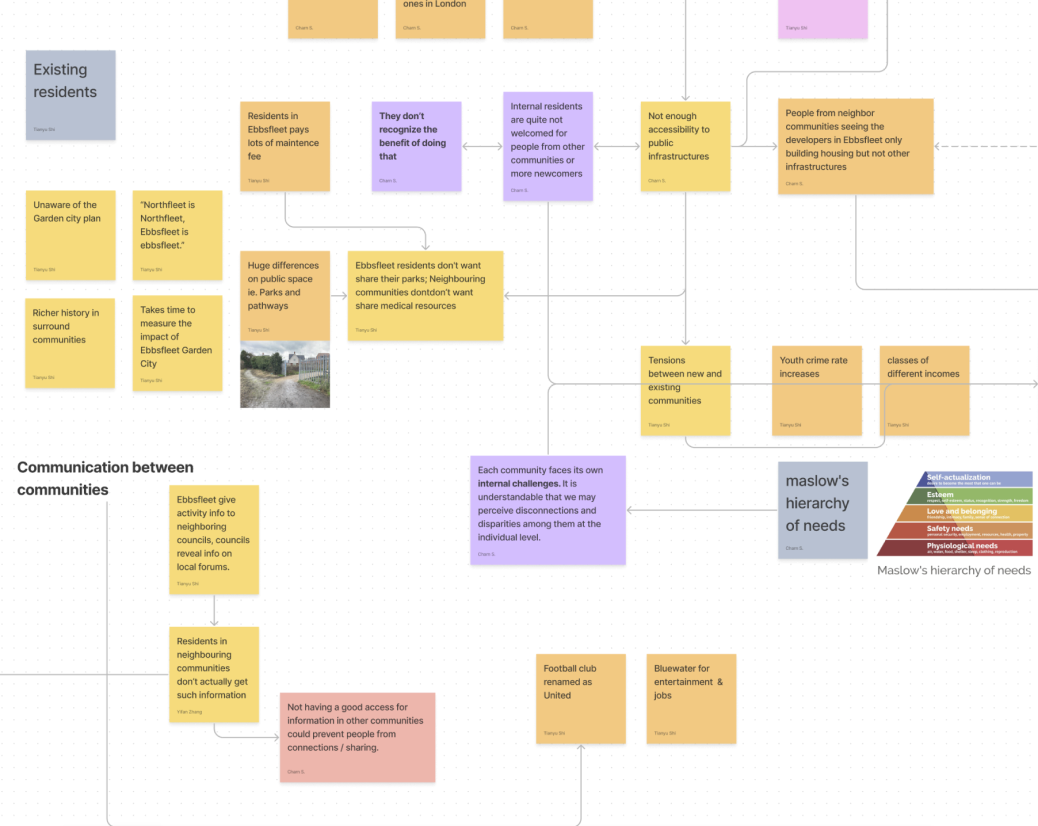
How might we inspire residents the idea of working together to build sustainable, multicultural, and harmonious communities?
Sustainability, culture, and heritage are very subjective and intangible concepts to local people. While they are aware of them, they often do not feel like they are a part of them. People tend to be more proud of tangible things like their favorite football club or the Bluewater shopping center.
Sustainability, culture, and heritage are very subjective and intangible concepts to local people. While they are aware of them, they often do not feel like they are a part of them. People tend to be more proud of tangible things like their favorite football club or the Bluewater shopping center.
-- Insight #3 --
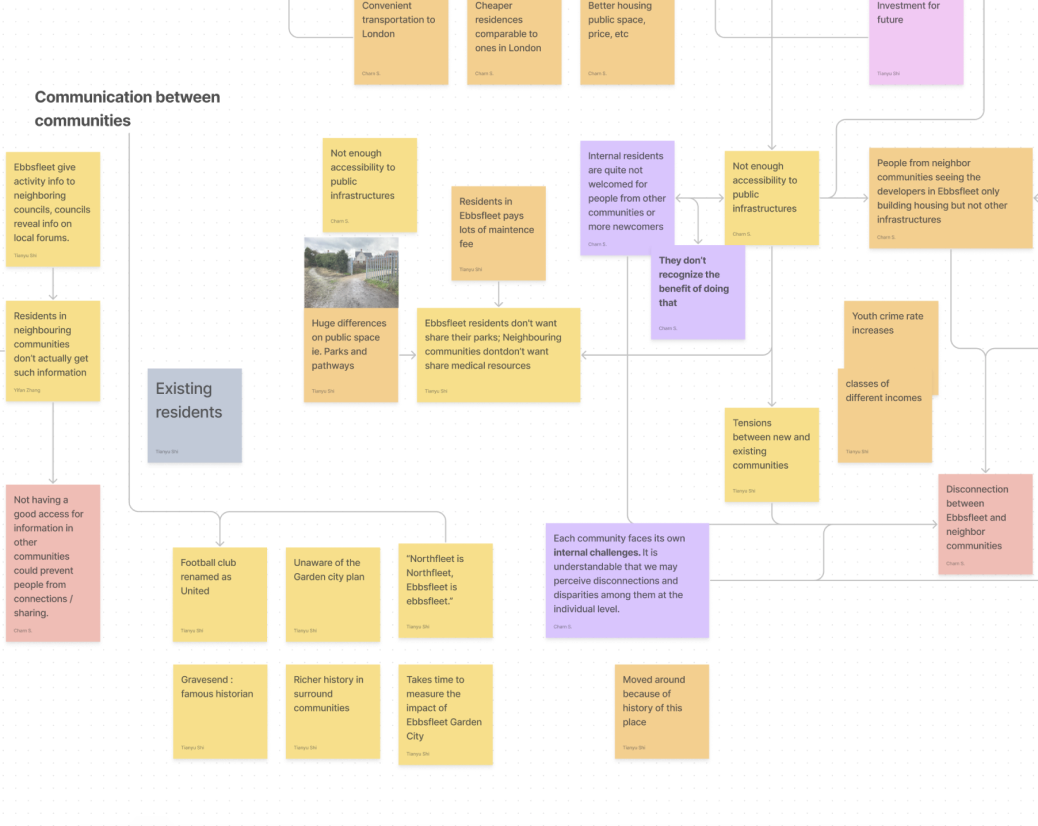
How might we build a stronger sense of community among residents from different communities and encourage them to get to know each other better?
The development plan aimed to expand the geographical and cultural boundaries of Ebbsfleet. This involved expanding residential areas, changing the name of the football club from Gravesend & Northfleet to Ebbsfleet United F.C., and bridging neighboring communities. However, there is currently a significant disconnection between communities due to a low motivation for shared values.
The development plan aimed to expand the geographical and cultural boundaries of Ebbsfleet. This involved expanding residential areas, changing the name of the football club from Gravesend & Northfleet to Ebbsfleet United F.C., and bridging neighboring communities. However, there is currently a significant disconnection between communities due to a low motivation for shared values.
-- Ideation --
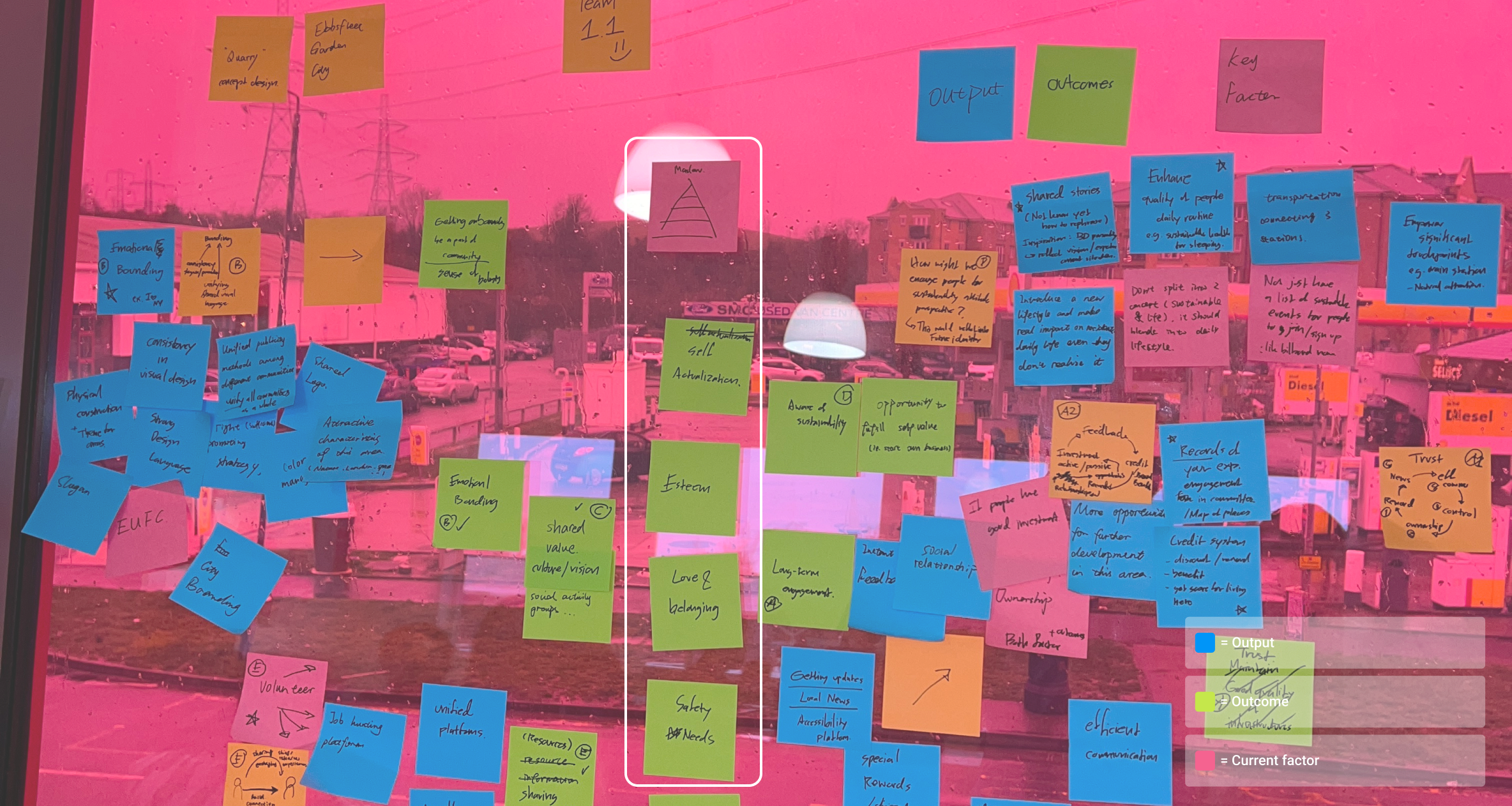
An initial categorisation of the ideas derived from the brainstorming resulted
in five main aspects. Matching these with Maslow's Hierarchy of Needs provided a reference for
the sequencing of specific design solutions to follow. Based on these insights we started to
build our initial concepts.
-- Early Concept #1 --
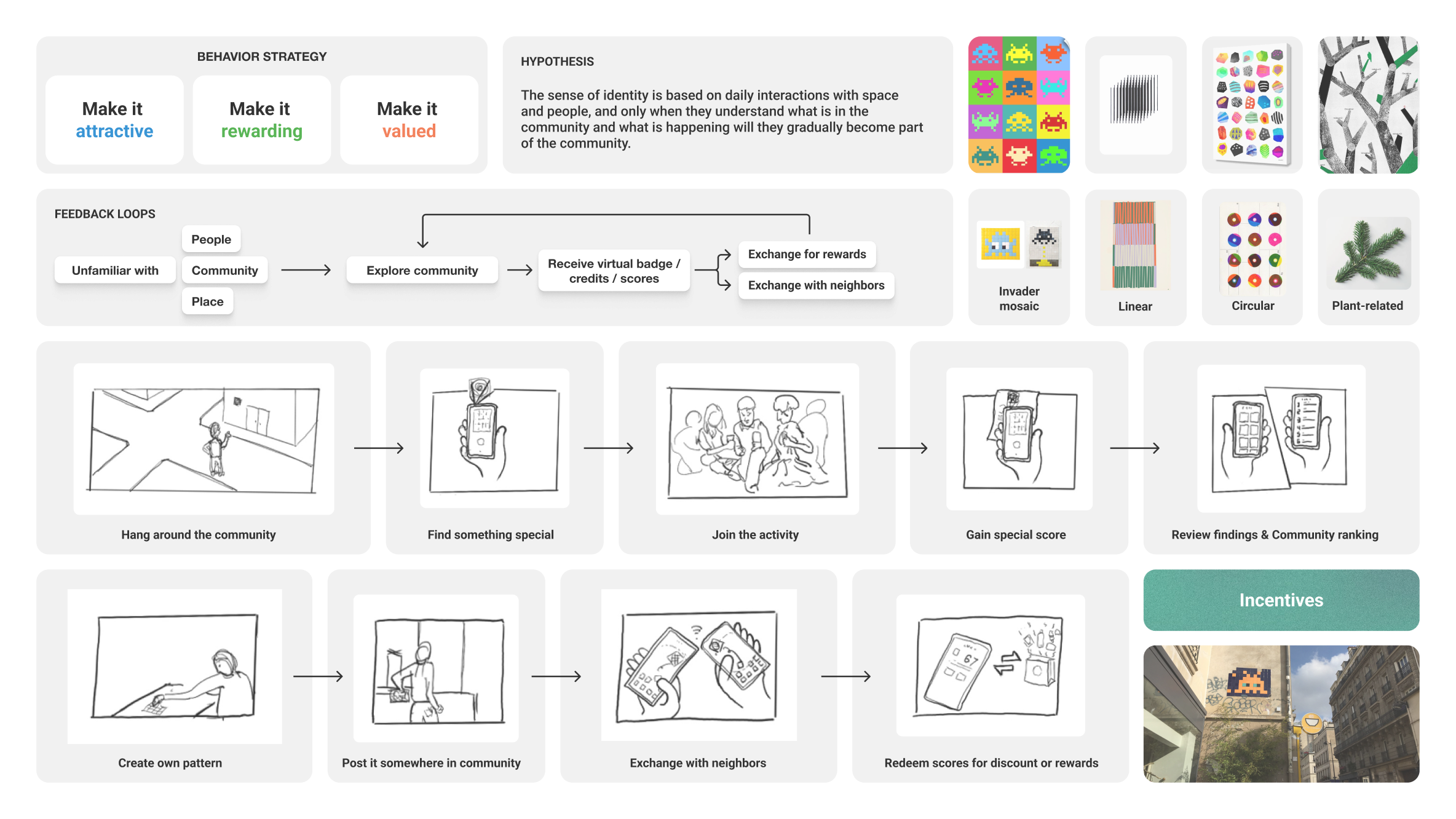
Our thoughts:
• The foundation of shared identity is familiarity and a sense of belonging.
• How to maintain momentum for long-term engagement, including budget allocation and interest levels?
• The graphic design aspect is a key component of this concept, accounting for 50% of its impact on success.
• We need to define what types of rewards we can give to people.
Initial feedback:
• They previously had a similar experience with the need to reward with tangible things.
• It has potential to encourage community involvement and engagement among people.
• It’s good to close the loop experience.
• It’s important to consider the lifespan of the design and experience.
• The foundation of shared identity is familiarity and a sense of belonging.
• How to maintain momentum for long-term engagement, including budget allocation and interest levels?
• The graphic design aspect is a key component of this concept, accounting for 50% of its impact on success.
• We need to define what types of rewards we can give to people.
Initial feedback:
• They previously had a similar experience with the need to reward with tangible things.
• It has potential to encourage community involvement and engagement among people.
• It’s good to close the loop experience.
• It’s important to consider the lifespan of the design and experience.
-- Early Concept #2 --

Our thoughts:
• How to track residents’ daily routine in a more harmonious way?
• What are the other categories of data that we can passively collect from residents?
Initial feedback:
• It has the potential to promote a sustainable lifestyle.
• What are the other categories of data that we can passively collect from residents?
• This can lead to pattern discovery within communities. For example, you can determine the most popular route or the most frequently visited places.
• How to track residents’ daily routine in a more harmonious way?
• What are the other categories of data that we can passively collect from residents?
Initial feedback:
• It has the potential to promote a sustainable lifestyle.
• What are the other categories of data that we can passively collect from residents?
• This can lead to pattern discovery within communities. For example, you can determine the most popular route or the most frequently visited places.
-- Early Concept #3 --
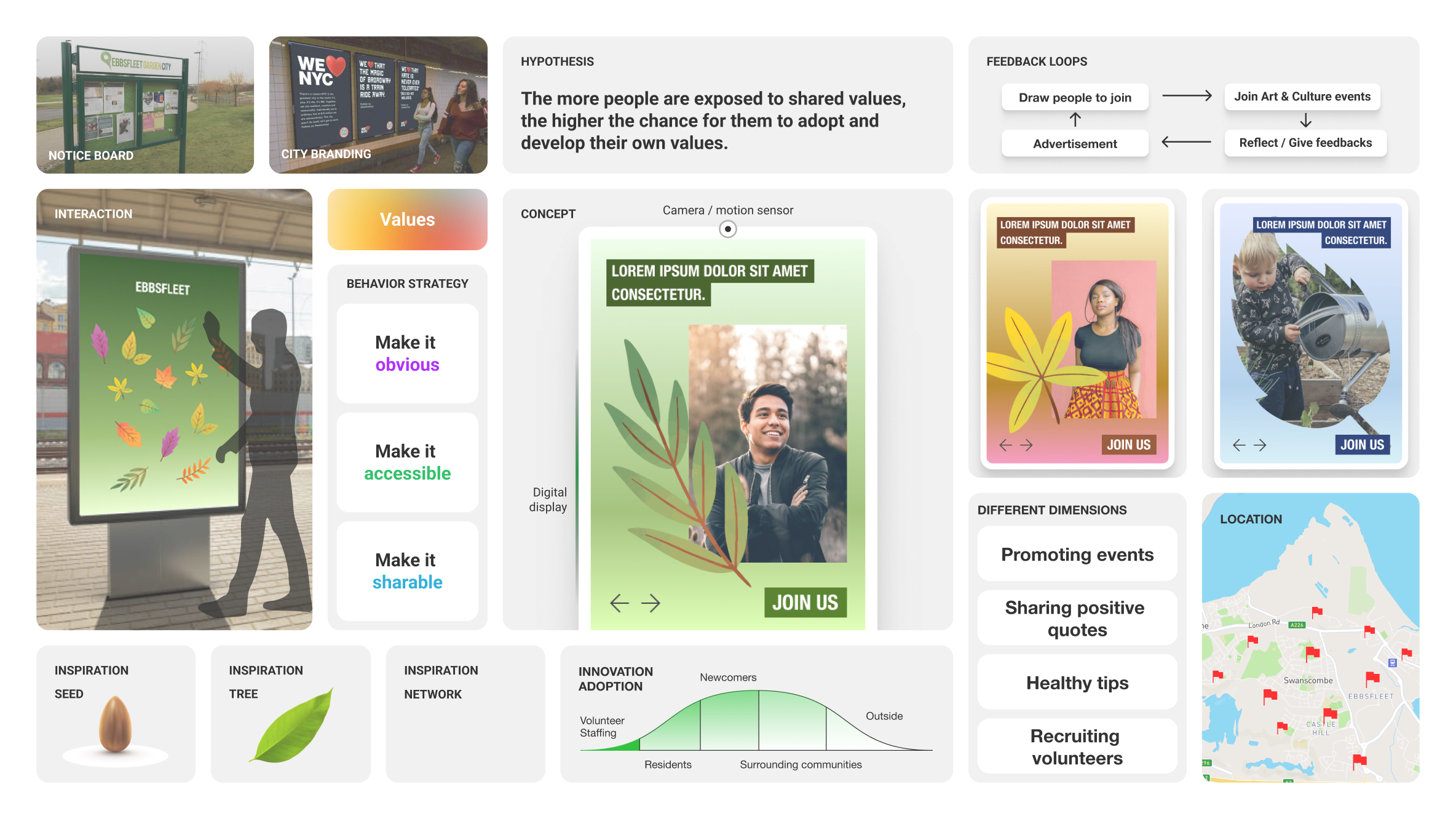
Our thoughts:
• It is beneficial to have new channels of interaction and communication between multiple parties.
• It not only strengthens community branding, but also promotes a humanistic element to the area.
Initial feedback:
• EDC has always struggled with how to communicate with resident.
• Good for looking for alternative ways of communication rather than solely relying on leaflets and noticeboards
• A good consideration for placing them in different locations
• An opportunity to refine messaging and to discuss sustainability, transportation…
• Symbols rather than logo & name (to make residents in other communities better involved
• It is beneficial to have new channels of interaction and communication between multiple parties.
• It not only strengthens community branding, but also promotes a humanistic element to the area.
Initial feedback:
• EDC has always struggled with how to communicate with resident.
• Good for looking for alternative ways of communication rather than solely relying on leaflets and noticeboards
• A good consideration for placing them in different locations
• An opportunity to refine messaging and to discuss sustainability, transportation…
• Symbols rather than logo & name (to make residents in other communities better involved
-- Early Concept #4 --

Our thoughts:
• How to convince people to choose this map over other options?
Initial feedback:
• It's interesting to see the different layers on maps that reveal what existed before.
• History doesn’t need to be limited to only physical building in the area.
• It's interesting to see how we can integrate stories of people and cultural matters into an area that doesn't have a documented history of its own.
• It is important not to focus solely on the novelty of Ebbsfleet.
• How to convince people to choose this map over other options?
Initial feedback:
• It's interesting to see the different layers on maps that reveal what existed before.
• History doesn’t need to be limited to only physical building in the area.
• It's interesting to see how we can integrate stories of people and cultural matters into an area that doesn't have a documented history of its own.
• It is important not to focus solely on the novelty of Ebbsfleet.
-- 2nd round interview --
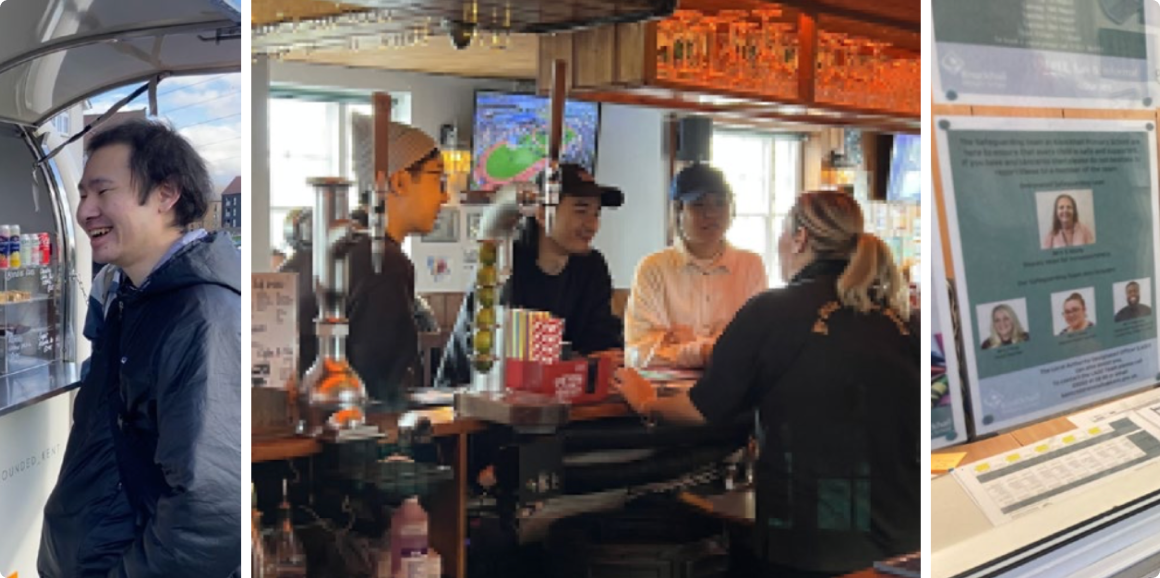
Through a second round of interviews, we got feedback from local residents on
the
initial ideas and developed clearer criteria for a successful "Shared Identity".

-- What is “Shared Identity” --
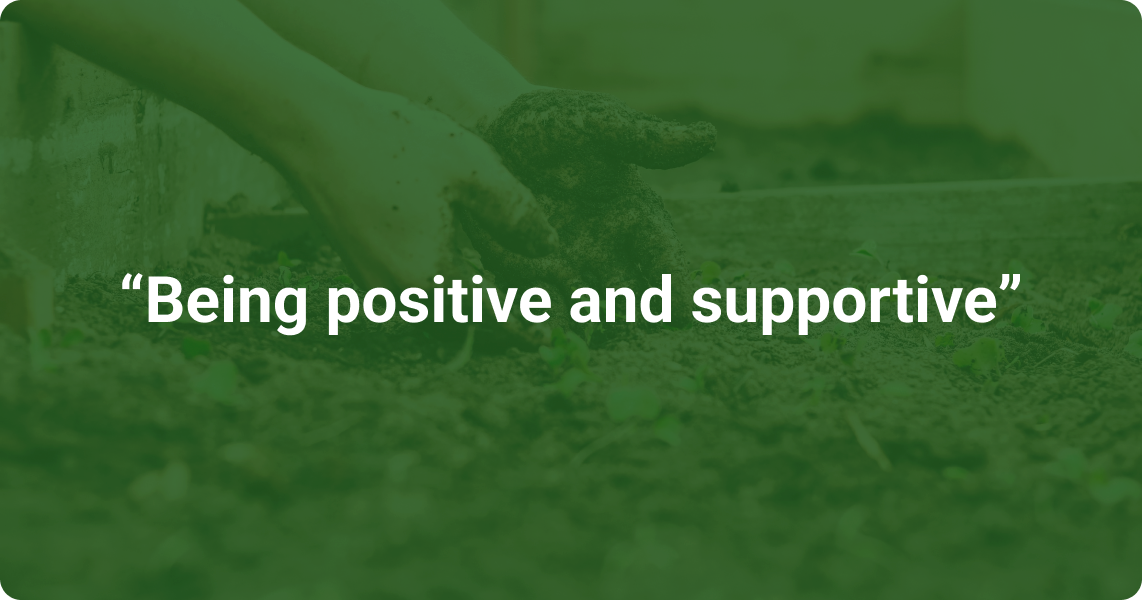
-- Redefine HMW --
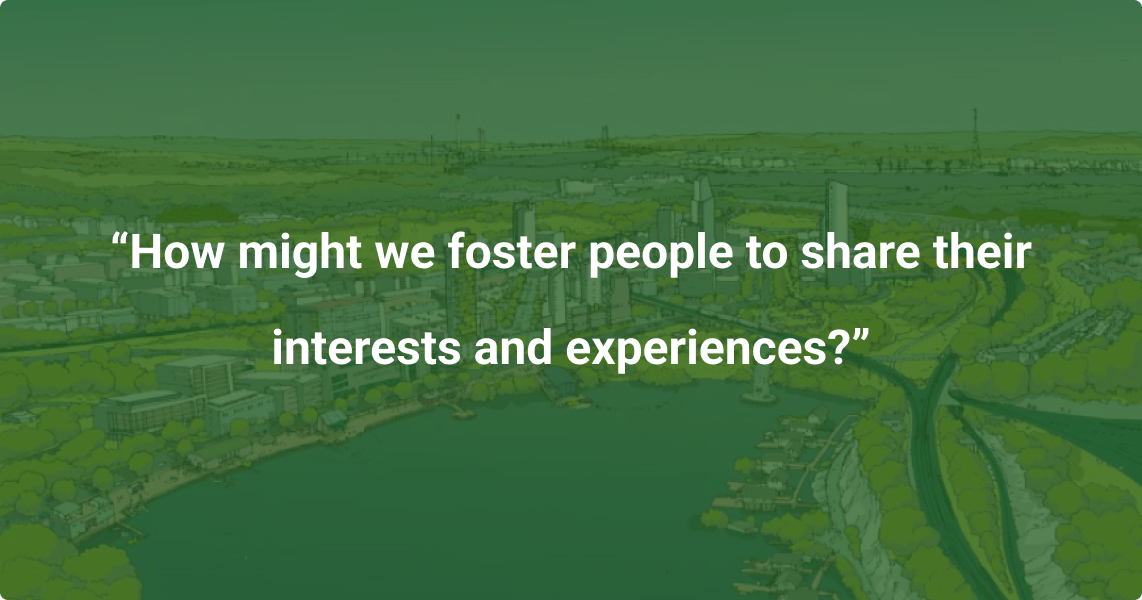
-- Evaluation --
We leveraged Metro Retro to categorise our ideas and 5E Experience Model to help us
evaluate them. We identified the strengths and weaknesses of each idea got a basis for subsequent
iterations of the ideas.
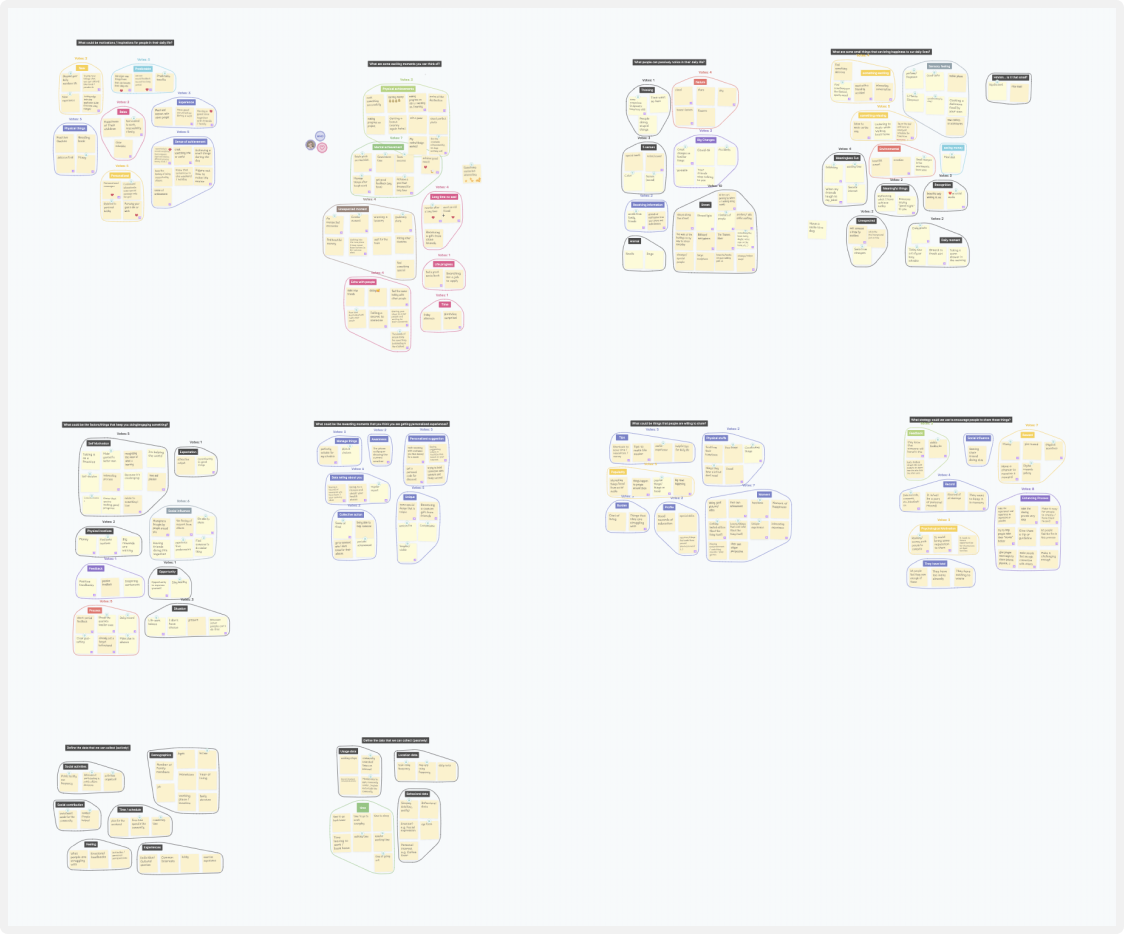
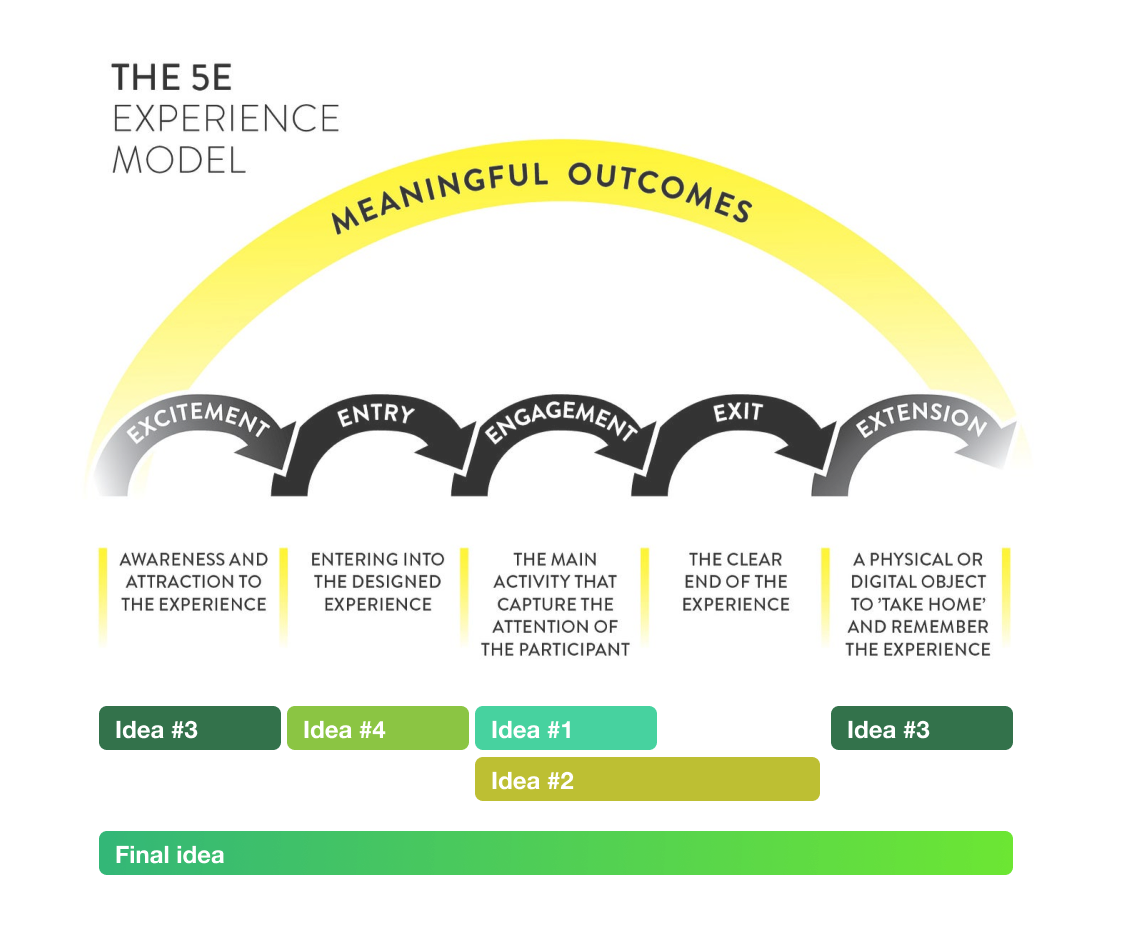


-- Quick Idea Testing --
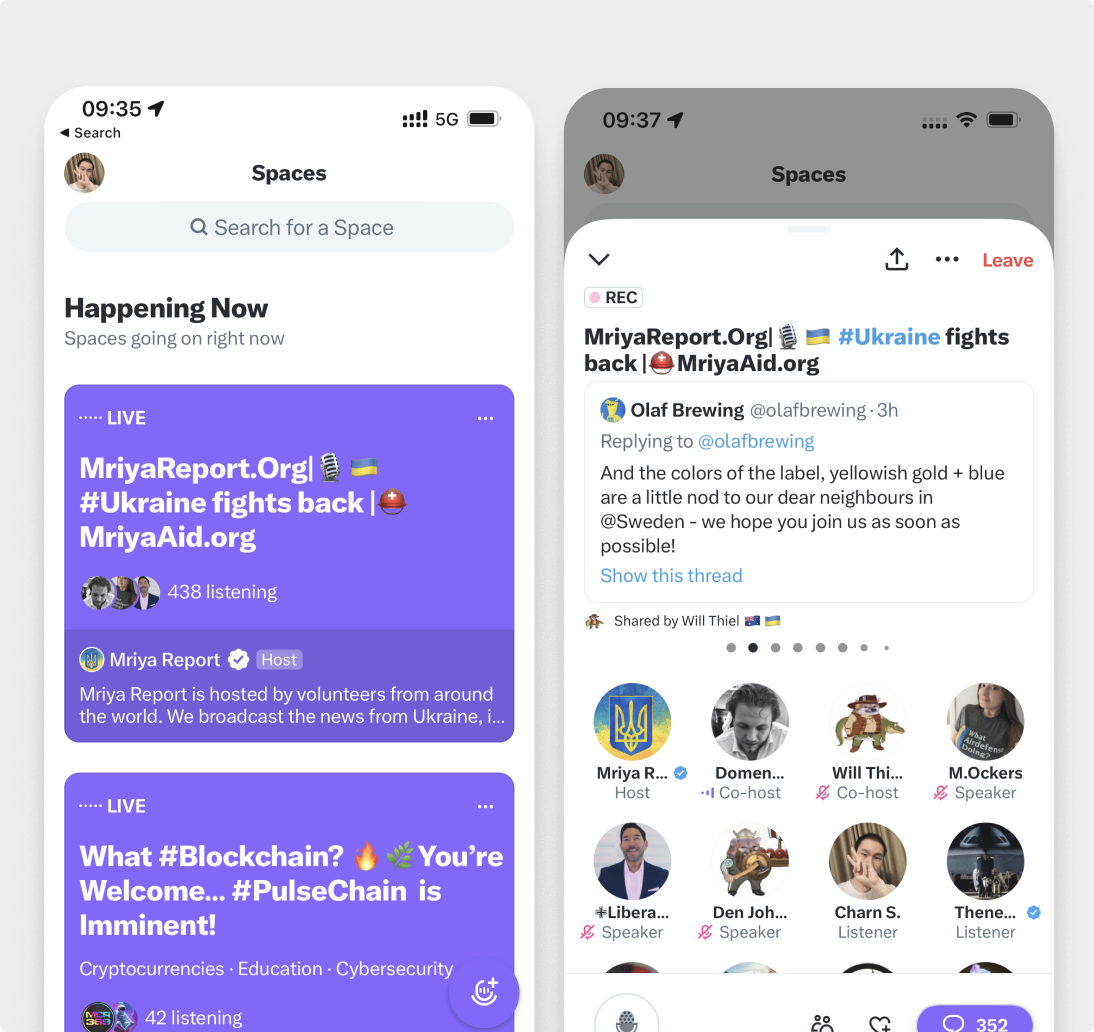
Direct feedback
• They prefer to interact in physical spaces where they can bring their children
and feel comfortable chatting with other families.
• We don’t like to talk to people we don’t know, it is better to know who you are talking
to.
• It’s good to have this to know how many people are interested in your activity, how many
people are coming...
• It really depends on time and topic, they don’t have so much time to sit down to listen to
people.
Latent Needs
• One of the key barriers to effective communication is not getting to know others before
having a conversation. It seems that what they want to know when the first meeting is about
shared interests and personal values.
-- Final #Part I --
The Fleet is an app helping people in Ebbsfleet to build connections by
fostering a virtual space where residents can engage positively and share interests. Through
features like status sharing and storytelling, it encourages interactions and supports newcomers
integrating into the community. The app centralizes interaction, from learning opportunities to
social events, catalyzing online connections into real-world participation. With a focus on
increasing social capital and promoting identity, The Fleet seamlessly bridges the virtual and
physical realms, ensuring that every user—from the long-standing resident to the newest
member—finds a place in Ebbsfleet’s evolving narrative.
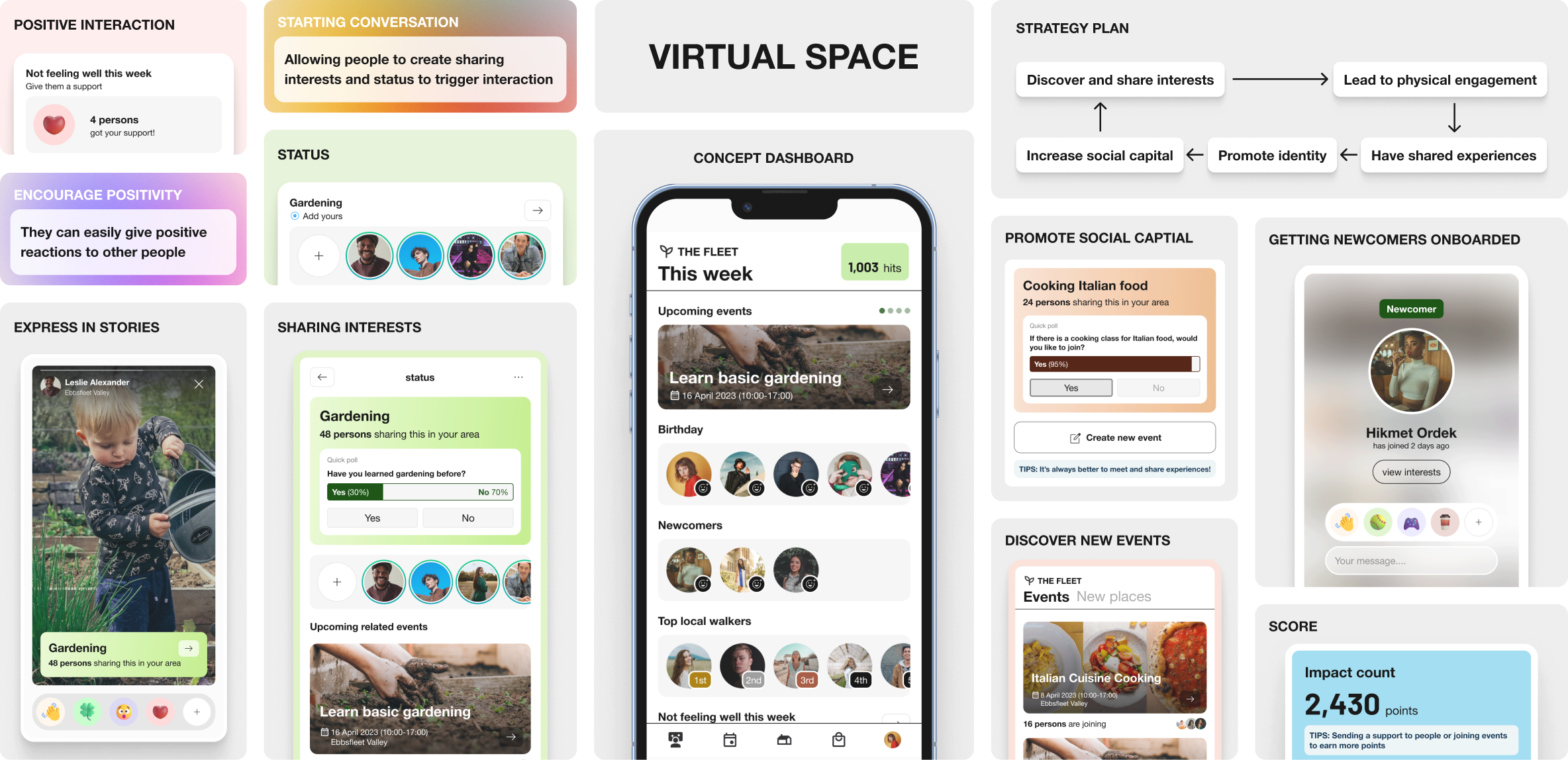

-- Final #Part II --
In the final stages of our project, we innovated a public art interactive installation
to foster both online and offline family interactions. This installation, prominently featuring a
rotating wheel linked to a central screen, serves dual purposes: it's a playful electricity
generator for educational engagement and a creator of artistic visual effects. As families spin the
wheel, they not only light up the screen but also contribute to a larger communal artwork.

Seasonally, data from installations across Ebbsfleet merge with generative AI to
transform into a unique city map art piece. This art is then repurposed into cultural products like
T-shirts, canvas bags, and postcards. Our aim is to cultivate Ebbsfleet's communal spaces as hubs of
connection, enhancing local identity and fostering a shared sense of belonging through these daily
use items.